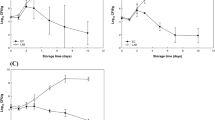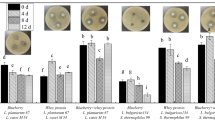Abstract.
As a traditional fermented product tarhana is the dry form of yoghurt-cereal mixture and form an important part of diets of many people in Turkey. Organic acid production during the fermentation and lowering the moisture content below 10% by drying have bacteriostatic effect on pathogenic microorganisms and increase product shelf life. In this research tarhana doughs were inoculated with pathogenic microorganisms Escherichia coli O157:H7, Staphylococcus aureus and E. coli O157:H7+S. aureus, separately. Tarhana samples were fermented at 35±2 °C for seven days, and dried using either a conventional hot air oven or a microwave oven. Counts of E. coli O157:H7, S. aureus, total mesophile aerobic bacteria, yeast-mould and lactic acid bacteria, as well as moisture and pH values were determined during fermentation and after drying. E. coli O157:H7 survived until the third day of fermentation in the inoculated samples; however it was not present after the fifth day. Counts of S. aureus decreased markedly after the first day of fermentation and were 102 cfu/g at the end of fermentation. Microwave drying completely destroyed the pathogen S. aureus, and was more efficient than the conventional method in reducing microbial population and moisture content of the samples.
Similar content being viewed by others
Author information
Authors and Affiliations
Additional information
Electronic Publication
Rights and permissions
About this article
Cite this article
Daglioglu, O., Arici, M., Konyali, M. et al. Effects of tarhana fermentation and drying methods on the fate of Escherichia coli O157:H7 and Staphylococcus aureus . Eur Food Res Technol 215, 515–519 (2002). https://doi.org/10.1007/s00217-002-0584-0
Received:
Revised:
Issue Date:
DOI: https://doi.org/10.1007/s00217-002-0584-0




